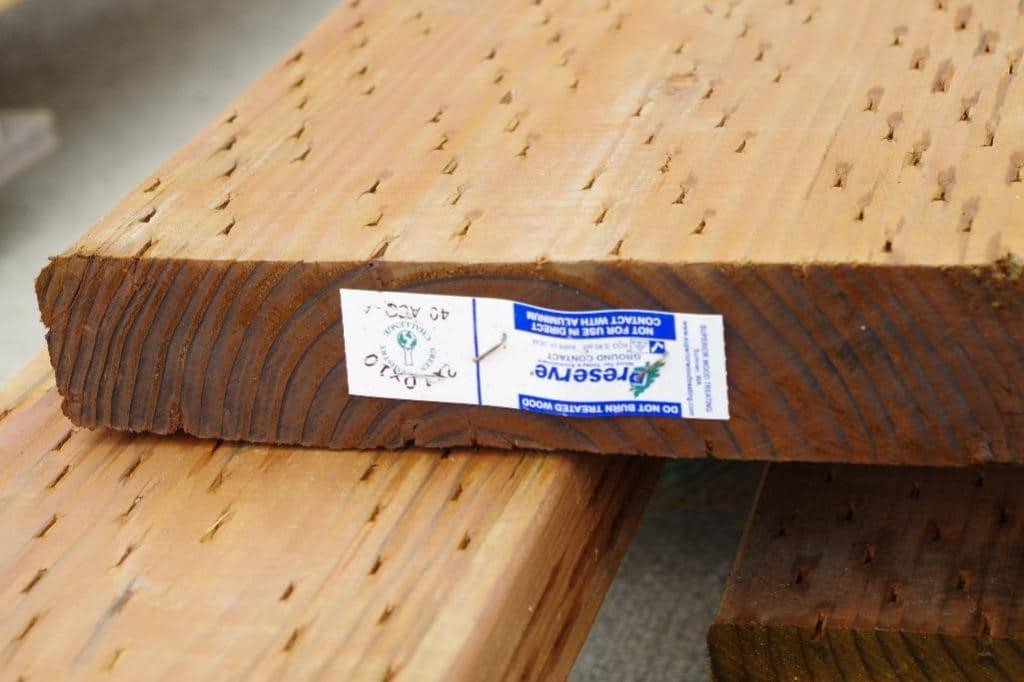What is Pressure Treated Lumber?
History
The preservation of lumber has been going on as far back as ancient Greece, where olive oil was used to protect bridge wood.
Lumber, being an organic material, is subject to decay and breakdown from a combination of the elements and microorganisms. Certain tree species such as slow-growing hardwoods like teak, oak, and black walnut, and certain softwoods like redwood, cedar, and juniper have natural decay resistance, but these species are in limited supply.
Softwoods like Fir, Spruce, Hemlock, and Pine are much more widely available, grow more quickly, and are much more suited for structural lumber due to their strength and workability. However, they lack natural resistance to decay in wet conditions, so in the late 1900’s, the commercial treatment of these types of lumber became an industry standard.
Current Lumber Treatment
Nowadays, most treated lumber goes through pressure treating in a vacuum-pressure tank, where a vacuum pulls air out of the wood, then copper-based preservatives are forced into the lumber via high pressure. The chemicals bind with the wood fibers, which helps treated lumber retain its rot resistance for decades. Afterwards, a vacuum is pulled again to drain off excess liquid. In our area, most treated lumber has a reddish brown stain applied for a more appealing look.
Pressure treated lumber can last for upwards of 60 years outside, although a more common lifespan for lumber used in deck structures is 25-40 years due to factors like loading and penetration from fasteners.
Treated Wood Preservative Penetration
Even though high pressure is used, preservatives in treated lumber only penetrate about 1/4”-1/2” beyond the surface, so in nearly all lumber, the center remains untreated.
This means any cuts or holes made into treated lumber need to be treated with a wood preservative like copper naphthenate. Failing to do so leaves the lumber susceptible to early decay. Check out a few videos we’ve made on properly treating treated lumber:
How to Treat Cut Ends of Pressure Treated Wood
Treated Lumber Corrosion
The copper preservatives used in treated lumber react with steel, accelerating corrosion of the steel. Thus, heavily galvanized (like Simpson ZMax) or 300-series stainless steel (304 or 316) hardware and properly rated exterior fasteners should be used with treated lumber. Fasteners should be rated for use with ground-contact treated lumber.
Treated Lumber Grades
Treated Lumber comes in several grades, usually indicated on the lumber sticker found at the end of boards. The following are common treated lumber grades:
UC3 Indicates Above-Ground Use - These are treated to a lower concentration and only to be used for wood that will not be in contact with the ground, such as railings, decking, etc.
UC4A Indicates Ground Contact (general use) - These are treated to a higher concentration for greater resistance to decay. You’ll find these used as deck posts, beams, and joist, as well as fence posts. Often, you’ll find incision marks on treated lumber used for Ground Contact.
UC4B Indicates Ground Contact (heavy duty) - These are treated to an even higher concentration and are typically used with pole barn timbers, landscape timbers, etc. They often have a dark, slightly green, rough appearance.








